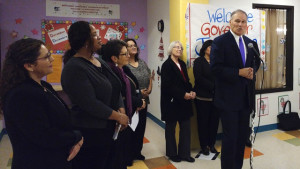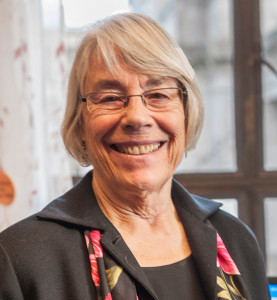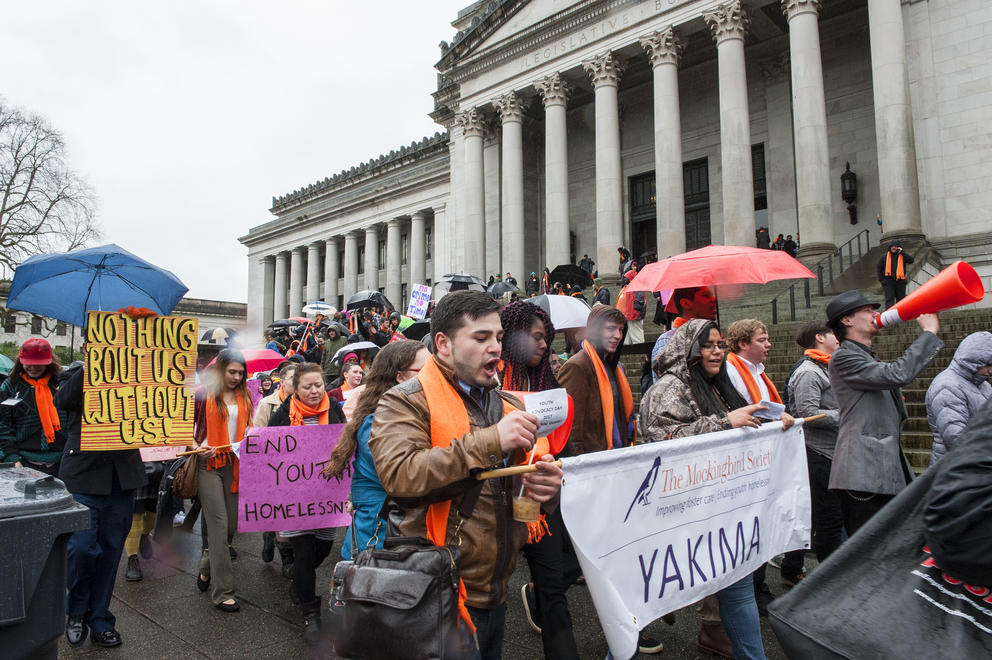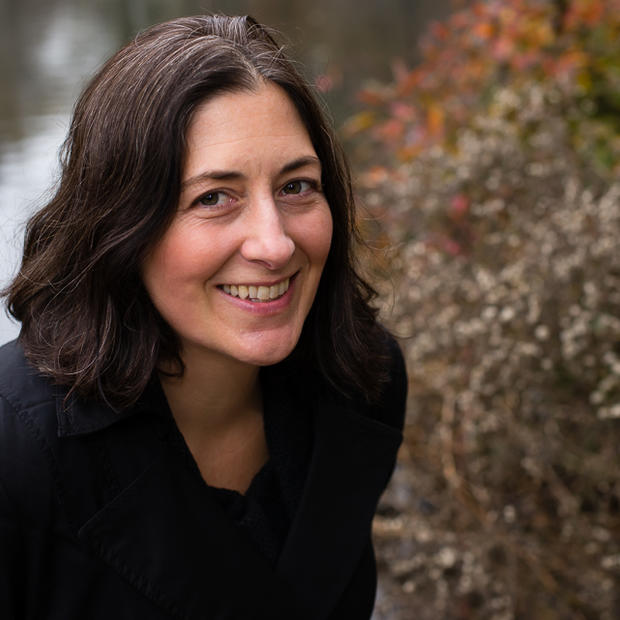Washington state could soon have a new agency devoted to helping at-risk children and families, with the long-term goal of reducing brushes with child protective services and the courts.
At Gov. Jay Inslee’s request, lawmakers are weighing bills to consolidate early learning, child welfare and juvenile justice programs under a new Department of Children, Youth and Families. In the meantime, a critical shortage of foster families and crippling social worker turnover make it increasingly hard for the state to find safe, stable homes for children in its care, whose numbers are swelling as the opioid addiction crisis deepens.
But proposals to address what legislators and agency leaders call a “crisis” in the state’s child welfare system face an uncertain future this legislative session, largely because of intense budget pressures brought on by court-ordered funding for public schools.
The idea for a stand-alone children’s department gained traction after Inslee appointed a Blue Ribbon Commission to study the issue last year. The bipartisan panel called for pulling child protective services, foster care and adoption programs out of the Children’s Administration, which is now under the Department of Social and Health Services. Starting July 2018, those would be combined with the free preschool and other early childhood initiatives now run by the Department of Early Learning, which would cease to exist. The new department would absorb juvenile justice programs, also currently under DSHS, in 2019.
Companion House (HB 1661) and Senate (SB 5498) bills authorizing the changes have broad bipartisan support in the Legislature, with 14 sponsors in the Senate and 28 in the House. The deadline for legislators to pass bills out of their initial committees is Feb. 17.
Inslee called the move a “major modernization” of the state’s programs for children and families at a December event announcing the commission’s findings. By combining services in a single department, he said, “these families are going to have better access, faster access and more comprehensive access.”

In an effort to stem the exodus of social workers, legislators this session will also take up long-awaited pay raises and a modest increase in their ranks. But agency requests to boost the supply of foster homes and expand services for children with mental health and behavioral problems remain unfunded. And the Children’s Administration could face cuts as legislators struggle to agree on a multi-billion dollar school-funding plan to satisfy the state Supreme Court’s McCleary decision.
Proponents of the new Department of Children, Youth and Families hope it will bring more attention, more accountability — and more dollars — to the state’s programs for children.
“The way government is organized says lot about its priorities,” said state Rep. Ruth Kagi, a Seattle Democrat who co-chaired Inslee’s commission and chairs the House Early Learning and Human Services Committee. The state has departments of veterans’ affairs and natural resources, Kagi pointed out, but the Children’s Administration must compete for resources with mental health services and seven other major areas in DSHS. “The visibility is a major, major improvement” for the new department, whose director will report straight to the governor, she said.
Skeptics question whether the department represents reshuffling rather than real reform, especially if the Legislature fails to fund its ambitious vision for a more prevention-focused agency. Lasting change will also require shifting the agency’s culture, which has become fearful and punitive, advocates and foster parents say.
Others see a chance to repair the state’s ailing foster care system.

“The state of foster care right now is one of the best arguments for the new department,” Kagi said. “We need to get them into an agency where their issues are focused on and there’s a concerted effort to make this system work better for children and families.”
A record number of foster youth slept in hotels and were sent to out-of-state facilities in the past year. This “placement crisis,” as state leaders call it, developed after the state lost nearly one in five foster homes and the Legislature cut funding to care for the most troubled and difficult-to-place children in the wake of the Great Recession.
Fixing all that is going to take money, advocates say.
“It’s a hope that this new department will have a large enough advocacy platform to finally bring in some adequate resources,” said Charles Shelan, the former CEO of Community Youth Services, a private child welfare agency in Pierce County.
Gov. Inslee budgeted about $10 million over two years to cover the administrative costs of forming the new department of Children, Youth and Families.
That $10 million is “no small change in this legislative session,” said state Sen. Steve O’Ban, a University Place Republican who chairs the Senate Human Services, Mental Health & Housing Committee and is a prime sponsor of the bill. “It’s well worth doing, if we can possibly, possibly afford it,” he said.
In the long run, fulfilling the broad vision for the department would cost much more. Its charge will be to intervene earlier than the current Children’s Administration now does. Instead of stepping in only when children are at risk of being removed from their caregivers, the department would support families and youth before they wind up in the child welfare or juvenile justice systems.
“Prevention takes a lot of money, and to do this grandiose plan that we want to do is going to take money,” said Liz Mueller, vice chair of the Jamestown S’Klallam Tribe, who sat on the Blue Ribbon Commission and advises DSHS on tribal child welfare issues. “If they didn’t have the dollars before, are they going to find the dollars to really do what needs to be done?”
The Legislature cut funding for the Children’s Administration sharply during the recession and eliminated more than 450 positions. Today the agency’s budget is back to 2009 levels, but that does not account for inflation or the growth in population and caseloads. Meanwhile, the number of abuse and neglect complaints serious enough to require an in-person investigation has jumped 40 percent since 2010.
Without a substantial increase in funding, creating a Department of Children, Youth and Families is “much ado about nothing,” said Dee Wilson, who spent 26 years with the Children’s Administration and led a research institute at the University of Washington School of Social Work. Today he trains social workers statewide. “Nothing is really going to improve or change. And furthermore, things are actually going to get worse,” he said.
Wilson estimates that rebuilding the state’s child welfare system would take at least $100 million over a decade. Adding expansive new prevention-focused programs would cost much more, he said.
Reducing social worker turnover — which approaches 30 percent annually in King County — is another key to making the child welfare system work better for children and families.
No child welfare system with a 30 percent turnover rate will ever function adequately regardless of programs.
“The most important issue in the upcoming session is not the new department, but whether and to what extent caseworker salaries are raised,” Wilson said. “No child welfare system with a 30 percent turnover rate will ever function adequately regardless of programs.”
Nonetheless, Wilson called the ambitions for the new department “praiseworthy” and said its creation could generate “some energy and hope that maybe some really super good things are going to happen as result.”
Legislators this session will vote on a 16 percent salary bump for the state’s social workers, who now start at just over $34,000 a year. In the long run, the increase would have to be closer to 30 percent to compete with hospitals and other employers who lure away state workers, according to Sean Dannen, the general government strategic campaign coordinator for the Washington Federation of State Employees.
Wilson is pessimistic the legislature will spring for the full pay raise. If it doesn’t, “the downward spiral of [the Children’s Administration] will continue and possibly increase,” he said.
High caseloads are also contributing to worker turnover — and to the attrition of foster parents who say case workers are too pressed to return calls, let alone provide meaningful support.
Social workers now carry 20 cases, on average, up from 17 cases four years ago. And many struggle to manage up to 30 cases, because they must pick up the cases of colleagues who have quit. The recommended level is 12 to 15 cases per worker.

Inslee’s budget proposes adding about 56 workers to get caseloads down to 18 per social worker.
Under his proposal, the Children’s Administration budget would get a 3.5 percent bump from its last two-year budget, but the bulk of the $42 million increase would go toward pay raises.
In contrast, governors of other states, including Massachusetts, Georgia and Texas, have proposed large budget and staffing increases for their states’ child protection agencies, in part to address high caseloads and worker turnover.
In Texas, Republican Gov. Greg Abbott requested emergency spending to expand the child protective services workforce by nearly 9 percent, compared to the 1.5 percent increase proposed in Washington. Case workers in both states now start at about the same salary. Abbott is seeking a 35 percent pay increase for his state’s case workers, compared with the 16 percent Washington workers would get.
Texas “is a rare instance of a state whose policymakers seemed deaf, dumb and blind for years ... finally seeing the light and making a dramatic policy shift in the right direction,” Wilson said. “If this can happen in Texas, with its conservative legislature, similar events can occur in Washington.”
Instead of increases, others fear budget cuts could be on the way for Washington’s child welfare system. “We are coming to grips with a very grim budget reality at the moment,” state Rep. Kagi said.
Inslee requested more than $4 billion in new taxes to satisfy the court’s McCleary school-funding decision and to expand mental health services, his top policy priorities this year. Legislators have balked at such a large increase. Any additional revenue they do approve will likely be directed to schools, leaving state agencies fighting for crumbs.
“It’s an ugly year,” Kagi said. “So getting foster care high up on the radar screen is really important. Because we cannot cut them again.” Last week Kagi announced that she and other legislators are starting a “reinventing foster care” movement to bring both reforms and revenue to the foster care system.

Two other proposals to address the foster care placement crisis didn’t make it into Inslee’s budget.
The Children’s Administration requested $1.9 million and 10 positions to reduce a backlog of applications from would-be foster parents. Applications increased last year, but the department says existing staff can’t keep up, so the roster of licensed foster homes hasn’t grown as much as it could.
To address a shortage of options for foster children with mental health and behavioral troubles, the department also asked for $5.1 million to fund at least 31 emergency beds, add a facility for longer stays and develop new reimbursement rates for people caring for these children.
Without enough foster homes and other placement options, the state has turned to more expensive alternatives, including housing children temporarily in hotels. Over the past two years, the state has spent around $2.3 million for more than 1,000 hotel stays, according to figures from the Children’s Administration.
Given Inslee’s other big-ticket priorities, the state lacks the revenue for these programs this year, Office of Financial Management budget writers say.
In this state budget season, the new Department of Children, Youth and Families appears to be the focus of child welfare advocates and legislators, who broadly support the initiative.
State Sen. Judy Warnick, a Republican from Moses Lake who sat on the Blue Ribbon Commission, said at the group’s final meeting in November that she had started out “very skeptical” of the idea. She had wondered whether the state could afford it. “But the question now has come around in my mind to, ‘Can we afford not to fund it?’”
While lawmakers agree on the broad goals for the department, Kagi said, “The skeptics just think this is moving the chairs around.” She and other bill sponsors are working on amendments to assure colleagues that the department will be held accountable for real reform.
“I would like to be just as prescriptive as we can,” said state Sen. O’Ban, who plans to add performance measures and timelines for the new department.
Others warn that, to be successful, the new department must also shift its culture.
A change in structure without a change in culture will just get us right back to where we are.
“The department is currently run more out of fear and self-protection than out of creativity and collaboration,” said Shannon Mead, a former foster mom who founded the Foster Innovation Lab to test ideas for to improving the foster care system. “A change in structure without a change in culture will just get us right back to where we are.”
That sort of rebuilding won’t happen overnight, others caution. The prevention efforts proposed for the new department will take a decade or more to bear fruit, said Wilson, the Children’s Administration veteran. And they may or may not end up saving taxpayer dollars. But lawmakers, he said, often lack the patience to wait for results.
In the meantime, the state can no longer afford to neglect its current child welfare system, which is “quickly deteriorating,” he said.
“Leaving the Children’s Administration and the foster care system as they are is a very bad idea,” Wilson said, “and potentially disastrous in ways most policymakers cannot imagine.”
We are particularly interested to hear from current and former foster parents, social workers and birth families who have experienced the child welfare system in Washington. Reach Allegra Abramo at aabramo@invw.org
InvestigateWest is a Seattle-based nonprofit newsroom producing journalism for the common good. Please help support this effort at www.invw.org/donate.
This reporting was supported by InvestigateWest donors, the Fund for Investigative Journalism and the Thomas V. Giddens, Jr., Foundation.



